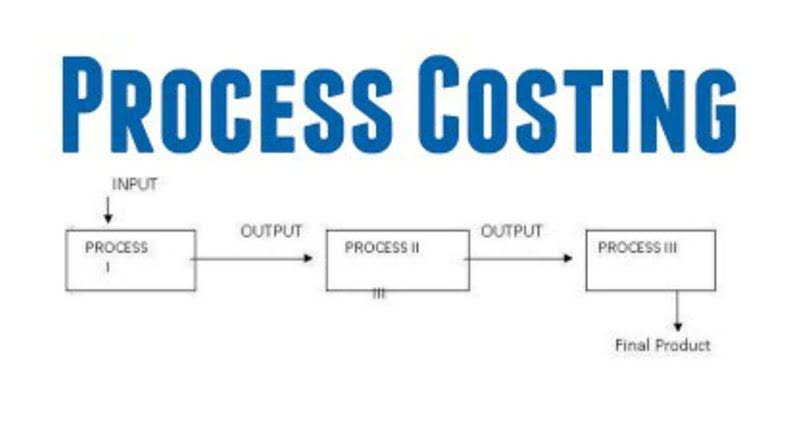
Learn financial statement modeling, DCF, M&A, LBO, Comps and Excel shortcuts. The historical cost of the inventory, or original value, was $100k, and we’ll assume the entirety of the inventory value will be wiped out. Suppose a clothing retailer determines a portion of its inventory is no longer sellable because of unfavorable market trends in consumer shopping behavior. However, certain industries are far more prone to recognizing inventory write-offs, such as the retail and consumer goods (e.g., perishable food) industries. An Inventory Write-Off is the process of reducing the book value of inventory deemed obsolete and unable to be sold, with no remaining potential to contribute positive economic utility. In the past, if the inventory was held for too long, the goods may have reached the end of their product life and become obsolete.
Perpetual and periodic inventory options
- For brands looking to improve inventory visibility and tracking within their own warehouses, look no further than ShipBob’s warehouse management system (WMS).
- The journal entry is debiting inventory obsolete expenses and credit allowance for inventory obsolete.
- To do so, you would debit obsolete inventory expense for $7,000 and credit the inventory obsolescence reserve for the same amount.
- This reduction in assets can affect various financial ratios such as the current ratio and inventory turnover ratio.
- Since the recorded values on the balance sheet reflect the conservative, fair value of their inventories, the profits of companies that abide by U.S.
- We translate complex financial concepts into clear, actionable strategies through a rigorous editorial process.
To recognize the fall in value, obsolete inventory must be written-down or written-off in the financial statements in accordance with generally accepted accounting principles (GAAP). While tracking contra asset accounts is cumbersome for bookkeepers and accounting clerks using manual accounting systems, if you’re using accounting software you’ll find that most of the heavy lifting is done for you. Generally accepted accounting principles require that estimates for obsolete inventory are reviewed on a regular basis. However, allowance for obsolete inventory manufacturing companies and companies that are in industries prone to obsolescence, such as technology or food service, may wish to re-evaluate this reserve on a quarterly basis. While the annual review is required for accounting compliance, the quarterly review can help management identify ordering issues that increase the chance of products becoming obsolete. This is an example where, even though GAAP does not require more frequent analysis, it may be good for the company to address this issue more often than required.

Utilize inventory management software
When a company determines that a portion of its inventory is no longer usable or saleable, it must reduce the inventory’s value on the balance sheet by recording an expense in the income statement. The amount of the write-off is equal to the difference between the original cost of the inventory and its current estimated value, which is typically based on market or scrap value. The company has to record the inventory of obsolete $ 40,000 on income statement. The inventory net balance will reduce by $ 40,000 as the allowance for inventory obsolete is the contra account of inventory. To record inventory loss, the business must credit its inventory account with the value of the written-off inventory to reduce the balance. Then, the loss on the inventory write-off expense account will be increased with a debit to balance.
What strategies can businesses employ to prevent obsolete inventory?
The carrying value of inventories on the balance sheet is expected to promptly be adjusted downward soon after management recognizes the conditions are met. There are a number of reasons why a company doesn’t want to hang onto obsolete inventory. Below is a list of some of those reasons, and each company that does carry obsolete inventory may not necessarily experience each downside. Inventory may become obsolete, spoil, become damaged, or be stolen or lost in some cases. Damaged goods is a type of dead stock and is sometimes considered obsolete if the product is unfixable and therefore, loses its value.

Inventory write-off is an essential component of accounting and financial reporting for companies. By recognizing the reduction in the value of inventory due to loss, damage, obsolescence, or any other reason, companies can provide accurate financial information, improve decision-making, and comply with accounting standards. Inventory write-offs are usually recorded as an expense in the period in which the loss occurs. However, some companies may choose to spread the expense over several accounting periods to minimize the impact on a single period’s financial statements.
You can estimate the total to record in the allowance for doubtful accounts based on uncollectible revenue totals from the previous year or you can conservatively estimate the amount. Here are answers to the top questions people have about inventory write-downs. Purchased inventory can get damaged in transit, while being picked, or even in storage. Storing and shipping fragile items are more prone to getting broken, bent, or otherwise defective, which then leads to revenue loss. If SKUs are left unsold in your warehouse for too long, they cross the expiry date and completely lose value. At this point, the expired inventory can no longer be written down but rather “written-off” and counted as a complete loss.
Items that have not moved within a certain period, usually based on historical sales data, are flagged for potential obsolescence. A write-down occurs if the market value of the inventory falls below the cost reported on the financial statements. A write-off involves completely taking the inventory off the books when it is identified to have no value and, thus, cannot be sold. Management may be reluctant to suddenly drop a large expense reserve into the financial statements, preferring instead to recognize small incremental amounts which make inventory obsolescence appear to be a minor problem.
- If you sell products at your business, you likely have some form of inventory.
- This method calculates the average cost of all units in inventory, and inventory write-offs are based on this average cost.
- As such, they might predict a much higher demand and end up ordering an excess amount of inventory.
- The company would then make an offsetting debit to an inventory write-off expense account.
- Therefore, an inventory write-down is a partial reduction in market value, whereas an inventory write-off is the complete removal of the corresponding value from the company’s books.
Latest tips to improve ecommerce logistics
